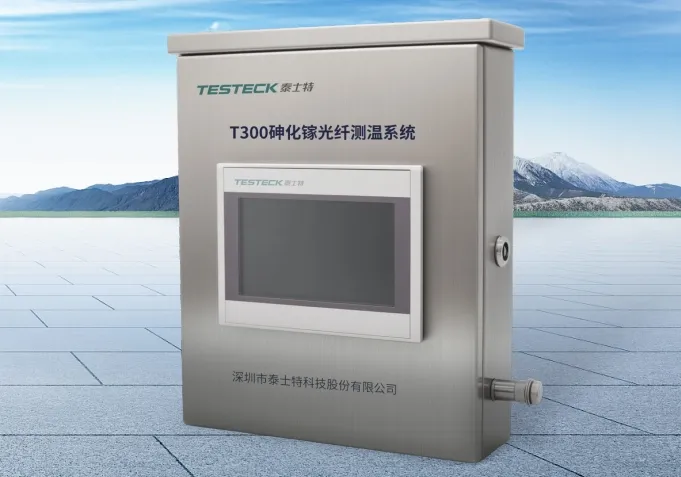In modern industrial systems, subtle changes in the operating temperature of equipment are often an intuitive mapping of its internal physical state and operating efficiency. A large number of engineering practices have shown that in the evolution of industrial equipment from performance degradation to functional failure, temperature anomalies usually appear first as the most significant warning signal. Therefore, temperature monitoring has become a basic link to ensure the reliability of industrial equipment, and building an accurate equipment temperature monitoring system has become a core means of combining technical effectiveness and economic rationality in the field of industrial safety monitoring.
01Core strategy for electrical fault warning based on thermal anomalies
In power distribution systems, it is crucial to grasp the operating status of high-voltage power transmission equipment through temperature monitoring. As the core of the power system, the primary electrical equipment includes circuit breakers, transformers, IGBTs, cables, busbars, switch cabinets, etc. The equipment is electrically connected through busbars, leads and cables. When current flows through these components, heat is generated, and almost all electrical faults are directly reflected as abnormal temperature changes at the fault point.
Therefore, in the field of temperature monitoring of power equipment, existing sensor technology faces three core challenges, and it is urgent to break through to adapt to the special needs of high-voltage power transmission and transformation scenarios:
High-voltage insulation performance bottleneck
Mainstream temperature sensors generally lack adaptability to high-voltage environments and cannot withstand the high voltage of power equipment, with the risk of breakdown or insulation failure.
Insufficient tolerance to strong electromagnetic interference
The high-frequency electromagnetic field generated by power equipment during operation (such as transformer leakage magnetic density of 0.5T) will cause serious interference to traditional electronic sensors, resulting in the inability to transmit temperature data continuously and in real time. This interference not only makes real-time monitoring ineffective, but is also likely to cover up the temperature rise signal of early faults.
Complex installation environment constraints
Existing sensors have strict requirements on installation space and location. Installation locations that are too far or too close will affect the temperature measurement effect of the sensor. For example, too far will cause signal attenuation, and too close will be directly affected by the installation size and cannot be installed.
02GaAs temperature measurement system – the king of temperature monitoring under extreme working conditions

With the breakthrough development and iteration of fiber optic sensing technology, the fiber optic temperature measurement system based on gallium arsenide (GaAs) has become the current international leading high-precision temperature online monitoring solution, especially in extreme environments such as high voltage and strong magnetic field power systems. This system innovatively combines the photoelectric properties of GaAs materials with the intrinsic insulation properties of fiber optic sensing, effectively filling the monitoring blind spots of traditional temperature sensors under complex working conditions, and has achieved a leapfrog improvement in high temperature stability, anti-interference ability and spatial resolution, providing revolutionary technical support for the safe operation and intelligent operation and maintenance of power equipment.
TST cable GaAs fiber optic temperature measurement system
TST cable GaAs fiber optic temperature measurement system is a fiber optic temperature measurement system that can directly monitor hot spot temperature. It relies on the principle of semiconductor bandwidth technology to realize direct monitoring of hot spot temperature of power equipment. It is an ideal choice for online temperature monitoring in the power generation industry and is widely used in large generators, power transformers and reactors.
Product parameters
| Temperature range | -40C to 200C | |
| Temperature measurement accuracy | ±1°C (full scale +/-1%) | |
| Sampling frequency | 200ms (per channel) | |
| Resolution | 0.1℃ | |
| Fiber type | 62.5um (quartz fiber) | |
| Temperature sensor | Minimum: 300um | |
| Sensor length | Up to 1000m | |
| Optical connector type | Completely immune | |
| Electromagnetic compatibility | ST | |
| Insulation characteristicsCompatibility in transformer oilChemical properties | In air: | |
| 30cm distance, insulation level test up to 142kV (Xigao Institute) | ||
| In transformer oil: | ||
| Mechanical properties | 60 Hz AC:13.4kv/mm(Tip), 16.1kv/mm(Cable) | |
| Light source life | Negative lightning impulse:26.9kv/mm(Tip/Cable) | |
| Temperature range | Soft | Bendable (bending radius: 3cm) |
| Temperature measurement accuracy | >30Year | |
03 System advantages: Redefining industrial temperature measurement standards
01 Technological breakthroughs
Combining the low loss and high bandwidth advantages of optical fiber transmission, three major technological breakthroughs have been achieved:
Electromagnetic immunity: The all-optical design completely avoids electromagnetic interference and can operate stably in strong electromagnetic field environments;
Precise penetration: The fiber core diameter is only 0.125mm, and the sensor can be embedded in closed spaces that traditional thermocouples cannot reach, such as transformer winding layers and GIS equipment air chambers;
Dynamic response: Millisecond-level temperature acquisition speed supports real-time capture of transient thermal events such as short-circuit current impact and partial discharge heating.
02 Core advantages
Precise and stable, worry-free measurement
Accuracy of ±1°C or even higher, anti-interference, no electronic drift, long calibration cycle, and meets industrial continuous monitoring.
Anti-interference transmission, adapt to complex
All-optical fiber transmission is not affected by strong electromagnetic fields and can operate stably in complex scenes such as nuclear power plants and power equipment.
Corrosion and temperature resistance, adapt to extremes
Acid and alkali corrosion resistance, working temperature range -200°C~300°C (some are higher), adapt to extreme environments such as chemical industry and oil wells.
Fast response, intrinsic safety
With millisecond response, the optical fiber system has no risk of electric sparks and is suitable for inflammable and explosive scenarios such as petrochemicals and coal mines.
Replaceable core, easy maintenance
Through modular design and standardized interfaces, the maintenance mode of industrial temperature measurement systems has been completely revolutionized.
The TST cable gallium arsenide optical fiber temperature measurement system is not only a technical innovation, but also a key infrastructure for the transformation of power systems to high reliability, intelligence and low carbon. Its precise, safe and long-lasting characteristics are reshaping the underlying logic of industrial temperature measurement and injecting core momentum into the resilience improvement and intelligent upgrade of global energy infrastructure.
At present, our customers cover leading domestic and foreign power energy companies, including the two major power grid giants State Grid and China Southern Power Grid, hydropower stations under the Three Gorges Group and the five major power generation groups, domestic equipment manufacturing leaders such as Shanghai Electric, Dongfang Electric, Harbin Electric, and internationally renowned companies such as GE and VOITH in the United States, providing advanced temperature measurement solutions for global power systems.

